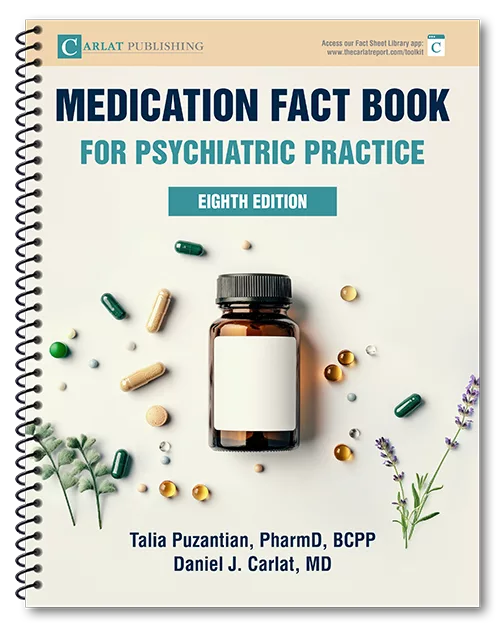Cognitive Behavioral Therapy for Psychosis: A Brief Review

Young man talking about his issues with psychotherapist in the office.
| Drazen Zigic/ShutterstockGrace Eun Lee, PhD. Clinical Assistant Professor, Stanford University School of Medicine, Psychiatry and Behavioral Sciences. Dr. Lee has no financial relationships with companies related to this material. Kate Hardy, Clin PsychD. Clinical Professor at Stanford University School of Medicine, Psychiatry and Behavioral Sciences. Dr. Hardy is a subject matter expert for Boehringer Ingleheim and Click Therapeutics. Dr. Ruffalo has reviewed this educational activity and determined that there is no commercial bias as a result of this financial relationship.
Learning Objectives
1. Execute the three key steps in Cognitive Behavioral Therapy for Psychosis (CBTp) practice.
2. Implement trauma-informed approaches in CBTp.
3. Summarize some of the current research findings on psychiatric treatment.
Although you may feel confident implementing psychotherapy effectively for anxiety or depression, treating psychosis may feel out of reach. Even the mildest presentation of hallucinations or delusions may lead you to consider referring to higher levels of care. In this article, we will guide you through the basics of Cognitive Behavioral Therapy for Psychosis (CBTp).
CBTp plays a significant role in preventative and early intervention efforts. You can use it at different stages of psychosis, including clinical high-risk, early psychosis, acute episodes, and chronic psychosis. A variety of team members, like clinicians, nurses, case managers, peer specialists, family advocates, psychiatrists, and more, can implement CBTp-informed approaches when coordinating treatment for psychosis.
Psychotherapeutic approaches: a brief history
Freud initially thought schizophrenia was too far outside the realm of normal psychological functioning to be treated with talk therapy. Despite Freud’s pessimism, later psychoanalytic thinkers applied psychodynamic treatment to psychosis. Psychodynamic theories focused on making sense of unconscious and inner emotional processes that were projected outwards and ultimately manifested in the individual’s behaviors as psychosis. Challenges with psychodynamic psychotherapy include limited access to trained therapists and insufficient evidence of long-term benefits (Fonagy P, World Psychiatry 2015;14(2):137-150).
Despite Beck’s detailing of cognitive therapy for schizophrenia in an early case study, cognitive behavioral therapy (CBT) was largely overlooked as an intervention for psychosis (Beck A, Psychiatry 1952;15(3):305-312). The prominence of biological models of schizophrenia in the United States funneled individuals experiencing psychosis to medication management as the front-line treatment. However, research shows that a combination of medication and CBTp is effective (Morrison A et al, Lancet Psychiatry 2019;6(7):e16), and CBTp alone can help those who haven't found relief through medication(Burns A et al, Psychiatr Serv 2014;65(7):874-880).
Effectiveness and target of CBTp
Multiple meta-analyses have demonstrated the effectiveness of CBTp in treating psychosis (Turner DT et al, Front Psych 2020;11:40). The therapy not only reduces psychosis symptoms but also general symptoms and the risk of transitioning to psychotic episodes. (Stafford M et al, BMJ 2013;346:f762).
The main aim of Cognitive Behavioral Therapy for Psychosis (CBTp) is to reduce the emotional pain caused by unhelpful and often distressing thoughts and beliefs that arise as a result of psychosis. CBTp helps individuals by improving their daily functioning and aligning it more closely with their personal goals.
To achieve this, clinicians who are trained in CBTp work closely with individuals in a collaborative manner. This involves three key steps:
- Developing a shared understanding of experiences: This step involves the clinician and the individual working together to thoroughly understand the person’s unique psychotic experiences. They discuss and analyze the nature of hallucinations or delusions and their effect on the person’s life.
- Identifying the factors maintaining distress and impacting functioning: Here, the focus is on identifying specific elements that contribute to ongoing emotional discomfort and challenges in day-to-day activities. For instance, certain situations or thoughts might be recognized as triggers for hallucinations or intensified delusional thinking, leading to increased anxiety or social isolation.
- Developing an understanding of the onset of their psychosis that is meaningful to the individual: The clinician helps the individual to construct a personal and meaningful narrative or explanation for why and how their psychosis started. This understanding can be empowering and can help in the healing process.
Stages of CBTp
CBTp typically progresses through the following stages:
Engagement and befriending
Establishing an empathic, warm, and compassionate therapeutic relationship is essential for effective CBTp. During this phase you might:
- Normalize your patient’s experience of psychosis
- Tackle stigmas about psychosis
- Teach that psychosis is a temporary state in which symptoms exist on a continuum and can be exacerbated by vulnerabilities (eg, stress, trauma, drugs, sleep deprivation) but also can be managed with skills
Engagement and befriending will be an invaluable foundation on which the subsequent phases of therapy build.
Assessment
Psychosis presents differently for every individual, so it is important to approach your patients with an open and curious attitude about their symptoms and how they impact their life. Don’t forget to be mindful of cultural issues. For example, seeing ancestral spirits or hearing the voice of God may be a culturally normal experience for some patients.
In this phase, your goal is to collaborate to:
- Identify key issues that your patient is struggling with by creating a “problem list”
- Create corresponding treatment goals
- Explore psychosis through non-judgmental curious questioning
Formulation
In the formulation phase, you work with your patient to create a shared understanding of psychosis, and to link distressing events with emotions and behaviors. Strive to identify:
- Early experiences
- Core beliefs
- How symptoms are maintained
Intervention
Help your patient with achieving their goals with interventions such as the following:
- Teach coping skills such as relaxation techniques, grounding skills, and distraction with the aim of reducing anxiety and increasing feelings of safety for experiences of psychosis-like paranoia.
- Give them tips for how to combat negative symptoms of psychosis. For example, identify small and manageable action steps to work toward specific goals.
- Help them reframe distressing interpretations about hearing voices. For example, if your patient believes a hallucinated voice belongs to a demon, you can try the following strategies:
- “Catch” the unhelpful and distressing thought: “I am hearing the voice of a demon.”
- Check whether the thought is realistic or helpful by examining the evidence: “What evidence do I have that the source of this voice is actually a demon?”
- Help them change these thoughts to be more helpful and realistic: “The source of this voice could be a demon, but it may instead be a hallucination.”
Consolidation
A musician does not perform on stage without rehearsing, and an athlete does not compete without training. Similarly, we cannot expect effective use of skills without practice. During this phase, help your patient to consolidate and apply skills in the real world. To increase the impact of consolidation, it is important to:
- Elicit feedback and discuss your patient’s experience of practice at the following session and make necessary adaptions
- Problem-solve barriers to practicing skills
- Meet patients where they are when it comes to setting goals
The ultimate aim is that your patient will be able to learn and implement CBTp skills independently and without your guidance over time.
Understanding Trauma-Informed CBTp
Addressing psychosis may involve considering the role of trauma, as it is closely linked with the development and experience of psychotic symptoms. There are various ways trauma can be connected to psychosis:
- Pre-existing Trauma: Past traumatic experiences may increase the risk of developing psychosis. This suggests a relationship between earlier life traumas and later psychotic episodes.
- Trauma Immediately Before Psychosis: Sometimes, a traumatic event occurs just before the onset of psychotic symptoms, potentially acting as a trigger.
- Trauma Resulting from Psychosis: The experience of psychosis itself, and related events like hospitalization, can be deeply traumatic for individuals.
Trauma-informed CBTp integrates this understanding into its approach. It involves:
- Recognizing the significant impact of past and current trauma on an individual's life.
- Creating a therapy environment that is safe, supportive, and focuses on the individual's strengths and journey towards recovery.
- Incorporating specific trauma-focused techniques (like trauma-focused CBT and cognitive processing therapy) to address both the psychosis and any underlying post-traumatic stress.
The essence of trauma-informed CBTp is to provide a holistic approach that not only addresses the symptoms of psychosis but also the underlying trauma that might be contributing to these symptoms (Hardy A et al, Psychol Psychother doi:10.1111/papt.12499 Epub ahead of print).
Carlat Verdict:
CBTp represents an effective method for assisting individuals with psychosis. It can be adapted to be particularly sensitive to the trauma experiences of individuals, and its effects for psychotic and general symptoms are maintained well past the end of treatment. Nevertheless, further research is needed on the role of individual characteristics in treatment outcome, the impact of specific CBTp components, and the integration of novel approaches. Given the limited number of trained CBTp practitioners, more resources towards CBTp implementation and training are necessary.
References in order of appearance in this article:
Fonagy P, The effectiveness of psychodynamic psychotherapies: An update. World Psychiatry. 2015;14(2):137-150.
Beck, A. Successful outpatient psychotherapy of a chronic schizophrenic with a delusion based on borrowed guilt. Psychiatry. 1952;15(3):305-312.
Morrison A et al. Antipsychotic drugs versus cognitive behavioural therapy versus a combination of both in people with psychosis: a randomised controlled pilot and feasibility study. Lancet Psychiatry 2019 Jul;6(7):e16
Burns A et al, Cognitive-behavioral therapy for medication-resistant psychosis: a meta-analytic review. Psychiatric Services. 2014;65(7):874-880.
Turner DT et al, Efficacy and moderators of Cognitive Behavioural Therapy for Psychosis versus other psychological interventions: An individual-participant data meta-analysis. Front Psychiatry. 2020;11:402.
Stafford M et al, Early interventions to prevent psychosis: systematic review and meta-analysis. BMJ 2013;346:f762
Hardy, A., Keen, N., van den Berg, D., Varese, F., Longden, E., Ward, T., & Brand, R. M. (2023). Trauma therapies for psychosis: A state-of-the-art review. Psychology and psychotherapy, 10.1111/papt.12499. Advance online publication. https://doi.org/10.1111/papt.12499
Lecomte T, Leclerc C, and Wykes, T. Group CBT for Psychosis: A Guidebook for Clinicians. Oxford University Press; 2016
Hardy A, Fowler D, Freeman D, et al. Trauma and hallucinatory experience in psychosis. J Nerv Ment Dis. 2005;193(8):501-507. doi:10.1097/01.nmd.0000172480.56308.21
Newsletters
Please see our Terms and Conditions, Privacy Policy, Subscription Agreement, Use of Cookies, and Hardware/Software Requirements to view our website.
© 2025 Carlat Publishing, LLC and Affiliates, All Rights Reserved.

_-The-Breakthrough-Antipsychotic-That-Could-Change-Everything.webp?t=1729528747)



